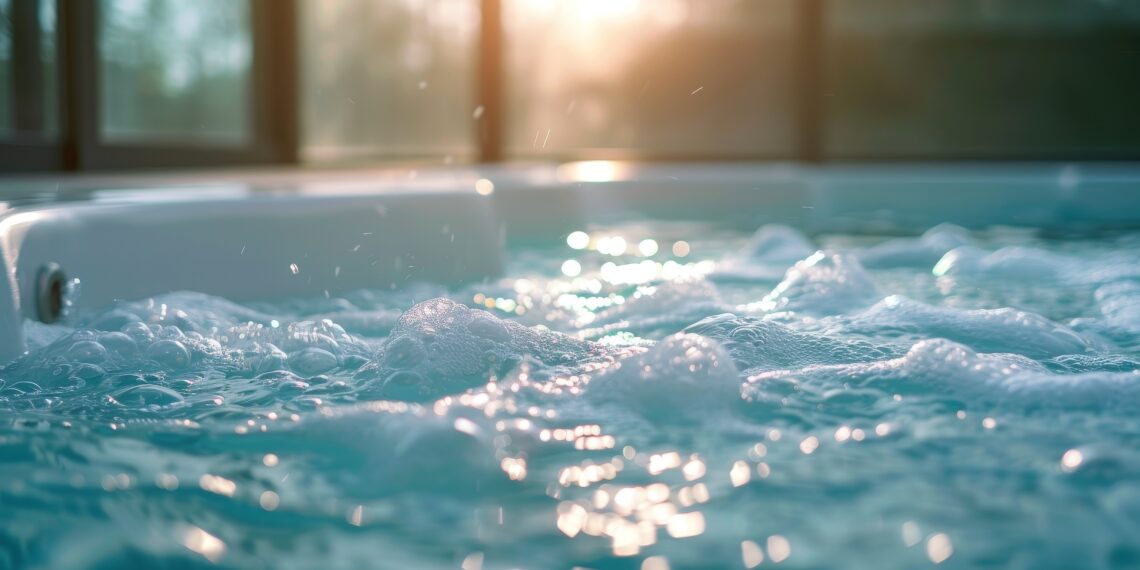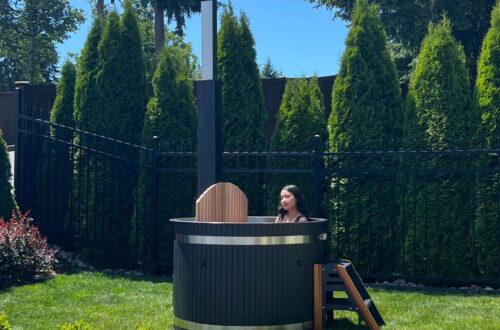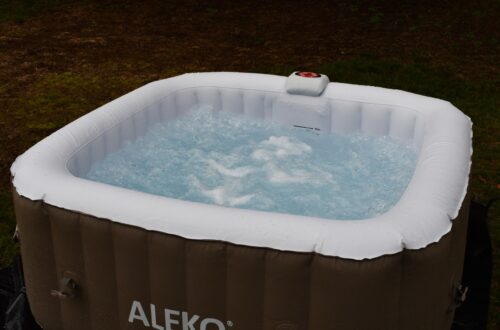Inflatable hot tubs are a fantastic alternative to traditional hot tubs, offering convenience, portability, and affordability. However, many hot tub owners wonder, “Do inflatable hot tubs naturally lose air?” The short answer is yes—but there’s more to the story. In this guide, we’ll explore the factors that contribute to air loss, how to differentiate between natural air loss and leaks, and tips to keep your inflatable hot tub in top shape.
Introduction to Inflatable Hot Tub Air Loss
Worried that your hot tub might be deflating? Here are some things to consider:
Common Concerns with Inflatable Hot Tubs
As with any inflatable product, the occasional need to reinflate an inflatable hot tub is completely normal and to be expected. Many hot tub owners worry about:
- Air loss: Is it normal, or is there a leak?
- Durability: Can inflatable models handle regular use?
- Temperature regulation: How do colder temperatures or heat loss impact air retention?
These concerns are valid, but with proper care and understanding, inflatable hot tubs can offer years of enjoyment.
Overview of Natural Air Loss vs. Leaks
Natural air loss occurs over time due to changes in air pressure, temperature fluctuations, and the inherent properties of inflatable materials. In fact, it’s a very common hot tub problem many owners face. On the other hand, leaks are caused by damage to the tub, such as punctures or improper storage. Knowing the difference can save you from unnecessary panic—and potentially costly repairs.
Do Inflatable Hot Tubs Naturally Lose Air?
Expected Air Loss Over Time
Yes, inflatable hot tubs naturally lose air, but it’s usually a slow process. Like a well-used air mattress or inflatable pool, minor deflation can occur over weeks or months due to:
- Material porosity: Even high-quality inflatable tubs aren’t completely airtight.
- Air temperature changes: Cold air contracts, leading to reduced air pressure.
As long as the deflation is gradual, it’s nothing to worry about. A quick top-up with the inflation hose should do the trick.
Environmental Factors Contributing to Air Loss
Environmental conditions play a significant role in how much air your hot tub loses. Key factors include:
- Temperature swings: Moving from warm water to colder temperatures can shrink the air inside your tub, making it feel less inflated.
- Humidity levels: Dry air can speed up natural air loss.
- Altitude: If you’ve set up your inflatable spa in a high-altitude location, expect a little more air fluctuation.
How to Recognize Normal vs. Excessive Air Loss
To distinguish between natural air loss and a potential leak, monitor the tub’s air pressure regularly. Here’s how:
- Natural air loss: This happens gradually and requires reinflation every few weeks.
- Excessive air loss: If your tub feels noticeably deflated within a day or two, you might be dealing with a leak or another issue.
Common Causes of Air Leaks in Inflatable Hot Tubs
Wear and Tear from Regular Use
Your inflatable hot tub works hard to deliver bubbly relaxation, so a bit of wear and tear is inevitable. Over time, frequent use can weaken seams or create tiny pinholes, especially around areas exposed to the most stress, like bubble jets.
Temperature Changes and Air Pressure
Hot water on the inside and colder temperatures outside? That contrast can cause the tub’s material to expand and contract, eventually leading to weakened areas. Rapid changes in air pressure, particularly in cold climates, can also exacerbate this issue.
Potential Damage from Punctures or Improper Storage
Inflatable hot tubs are durable, but they’re not invincible. Sharp objects, rough surfaces, or improper storage can cause punctures or damage that leads to air loss. Always use a thermal cover to protect your tub when it’s not in use, and store it in a clean, dry area during freezing temperatures.
How to Prevent Air Loss in Inflatable Hot Tubs
Preventing air loss is all about proactive hot tub maintenance. Here are some tried-and-true tips:
- Check for leaks regularly: Inflate the tub and spray soapy water on its surface. If you see bubbles, you’ve found a leak.
- Use a thermal cover: This reduces exposure to cold air and minimizes temperature fluctuations.
- Avoid sharp objects: Keep the area around your inflatable spa free from debris or anything that might puncture it.
- Store it properly: Deflate the tub completely before storing it, and ensure it’s clean and dry to prevent mold or material degradation.
- Monitor air pressure: Check the inflation level regularly and adjust as needed.
For added peace of mind, consider investing in a repair kit designed specifically for inflatable hot tubs.
Conclusion: Keeping Your Inflatable Hot Tub in Top Condition
Inflatable hot tubs naturally lose air over time, but that’s no reason to fret. By understanding the factors that contribute to air loss and taking simple preventative measures, you can keep your portable hot tub in excellent shape. Whether it’s ensuring proper air pressure, protecting your tub from temperature swings, or addressing minor leaks promptly, a little effort goes a long way toward maintaining your spa’s longevity.
So, the next time you’re lounging in warm water with bubbles swirling around you, you can relax knowing your inflatable spa is ready to deliver many more nights of blissful soaking.
If you’re in the market for a new inflatable hot tub or looking to upgrade your relaxation experience, be sure to check out the hot tubs at ALEKO. With easy setup, durable designs, and relaxing features, our hot tubs are perfect for creating your own backyard oasis. Explore ALEKO’s collection today and find the perfect home spa to elevate your downtime and ensure many more nights of blissful soaking.






